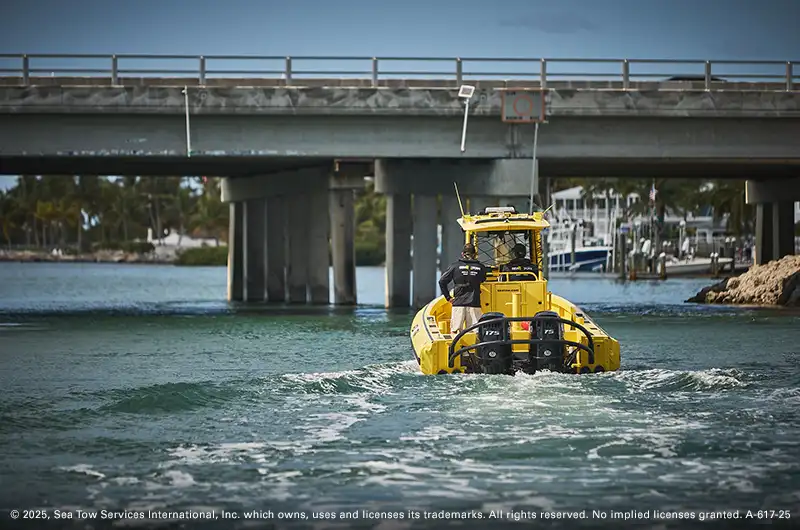
To safely pass under a river bridge, you must know your boat’s exact air-draft, verify the bridge’s real-time clearance on the gauge, maintain slow to no-wake speed, stay in the center of the marked channel, give right-of-way to vessels running with the current, and use your VHF radio to coordinate with the bridge tender or nearby traffic before you commit. If in doubt, wait, measure again, and radio for assistance.
Seasoned skippers will tell you that every bridge has its own personality. Some open on demand with a friendly lift-operator; others crouch immovably over the river, daring you to judge the tide just right. Yet the underlying routine for getting through safely never changes: measure, plan, communicate, execute.
Measure: Air-draft versus clearance
Start by treating “air-draft” the way pilots treat runway length; you must know it to the inch. Measure from the waterline to the tallest object on your boat at that moment – radar, antennas, kayak on the hard-top, whatever it may be.
A lightly loaded center-console and the same hull packed for a week away can differ by half a foot. On charts, fixed-bridge clearances are published for Mean Higher High Water, the higher of that day’s two tides, but know that water levels can ride even higher after rain or spring runoff.
Plan: Current, squat, and timing
On a fair tide the water accelerates between abutments, tugging bows offline, and lengthening stopping distance.
That matters more than sheer height. Approach at idle; if you need an extra few inches, a brief burst of throttle can sink the stern on a planing hull, also known as the “squat” effect. Narrowboats and displacement cruisers don’t gain much here, so never rely on squat alone.
If clearance still looks skinny, wait for low water or think lateral: ballast bags, temporary heel, even lowering the mast can buy safe margin but only if practiced beforehand.
Communicate: VHF, sound signals, and courtesy
Movable bridges require a marvel of cooperation. Hail the tender on the local working channel, using the bridge’s charted name, your vessel name, and direction.
One prolonged and one short blast on the horn is the formal request; five shorts is the answer nobody wants to hear. It is illegal to ask for an unnecessary lift, so stow antennas or outriggers if that solves the problem.
While you wait, station-keep with room to bail out; the down-bound boat in the current has priority, and bigger or less-maneuverable craft trump smaller ones.
Execute: Centerline, no wake, eyes outside
Green range lights (or paired reds and greens) mark the safe hole; aim between them and resist the urge to cut corners.
Keep your speed at a no wake pace. What rolls harmlessly off your transom can slam an angler against a fender pile two boat-lengths away. Night or day, stand a proper lookout – debris, anglers, divers, even a swimmer on a slack tide can pop up under the span.
When things get uncertain
Every skipper eventually faces the “will it… won’t it?” moment with a bridge. The right move is to back out early, remeasure, or call for help. Powerlines often run parallel to bridges; one brush electrifies the railings and the water around you, so if contact ever happens, stay aboard and motion rescuers over rather than reaching for the dock.
The payoff
Passing under a river bridge is rarely dramatic when done correctly, that’s the point. You glide beneath the girders, throttle up, and the adventure resumes on the other side. By knowing your numbers, factoring the river’s mood, and showing radio-savvy courtesy, you turn a potential collision headline into a non-event – and spare the fiberglass, the crew’s nerves, and your cruising kitty. Safe passages start with solid seamanship, but they’re backed up by the yellow boats on the horizon.
